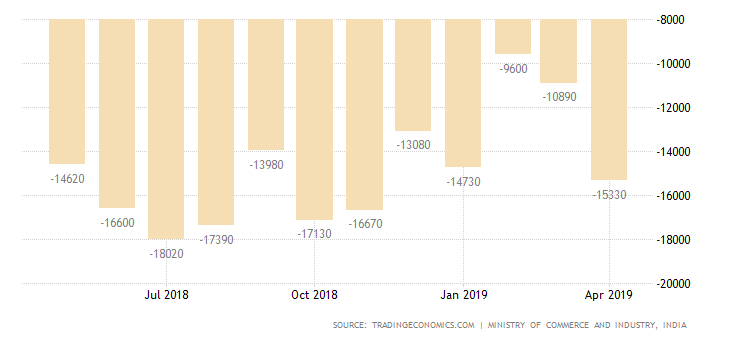Why in news?
The estimates for foreign trade showed a sharp slowdown in merchandise export growth in April, 2019 to 0.64% from a year earlier.
How is the exports scenario?
- There was a 31% surge in petroleum products shipments to overseas markets in April.
- If this is removed, India’s goods export actually contracted by over 3% in dollar terms.
- [In contrast, overall merchandise exports had expanded 11% year-on-year in March, 2019 with the growth in shipments excluding petroleum products.]
- The slump in exports was fairly widespread, with 16 of the 30 major product groups reflecting contractions.
- This is in contrast with the 10 categories that had shrunk in March.
- Worryingly, shipments of engineering goods declined by over 7% after having expanded by 16.3% in March.
- The traditionally strong export sectors all weakened in April.
- These include the gems and jewellery, leather and leather products, textiles and garments, and drugs and pharmaceuticals sectors.
- E.g. contraction in gem and jewellery exports widened to 13.4% in April, from 0.4% in March; it was 15.3% from 6.4% respectively for the leather segment
- Likewise, the pace of growth of garment exports decelerated to 4.4% from 15.1% in March.

Balance of Trade
What is the case with imports?
- Imports grew by 4.5% to $41.4 billion in April, accelerating from March’s 1.4%.
- This was primarily because the purchases of crude oil and gold continued to increase.
- The 9.3% jump in the oil import bill, from March’s 5.6%, can partly be explained by the rise in international crude prices.
- However, the 54% surge in gold imports reflects India’s unappeasable appetite for gold, calling for policymakers' attention and action.
- Excluding oil and gold, however, imports shrank by more than 2% in April.
- This signals that import demand in the real productive sectors is largely balanced.
What are the implications?
- Jobs and demand - The traditionally strong export sectors are all key providers of jobs.
- So any prolonged slump across these industries will impact jobs, wages and overall consumption demand in the domestic market.
- Trade deficit - With merchandise imports outpacing exports, the trade deficit widened to a five-month high of $15.3 billion.
- The widening trade shortfall will add pressure on India’s widening current account deficit (CAD).
- Being at around $51.9 billion in the first 9 months of fiscal 2018-19, CAD had already surpassed the preceding financial year’s 12-month shortfall of $48.7 billion.
- More challenges and limitations to trade and exports are ahead with the escalating trade war between the U.S. and China.
- The impacts of this could be widespread on global growth.
- Moreover, the rising military tensions in West Asia could potentially further push up oil prices, further increasing India's import burden.
- Given these, containing the trade and current account deficits seems significantly challenging and urgent measures are needed to boost exports.
Source: The Hindu
